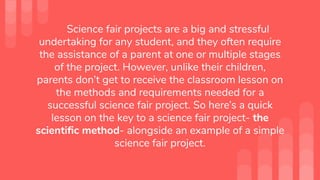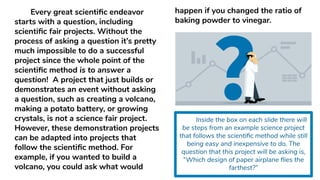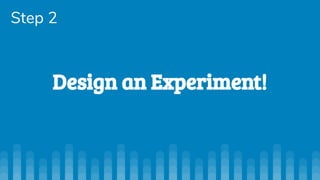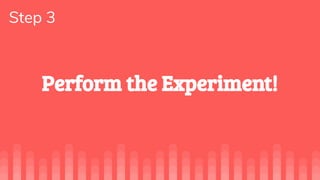The document is a guide for parents to assist their children in completing science fair projects using the scientific method. It outlines key steps including asking a question, designing an experiment, performing the experiment, and analyzing results, with a specific example of testing paper airplane designs. Parents are encouraged to support their children in documenting the process and drawing conclusions based on gathered data.









